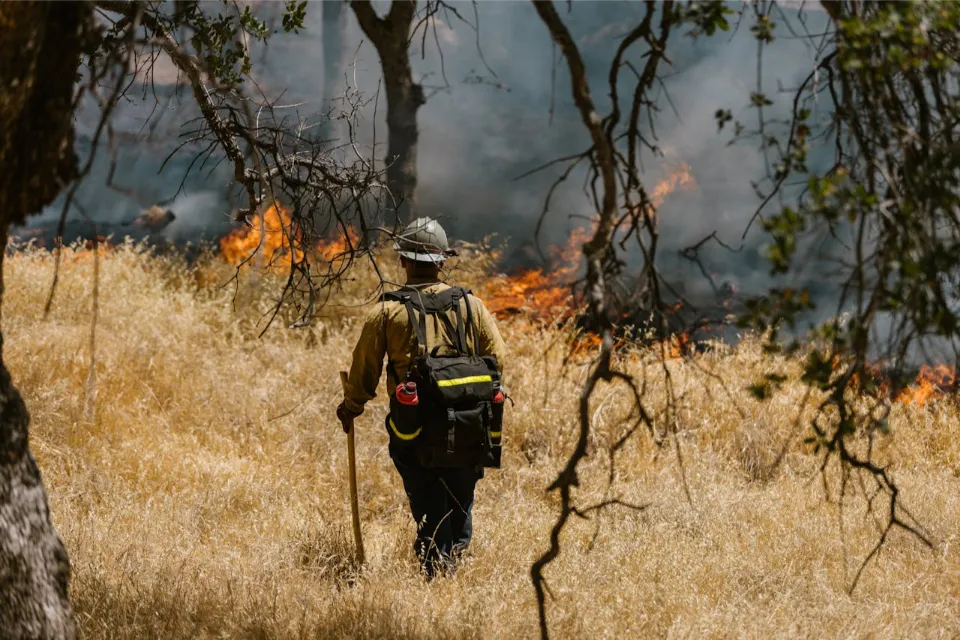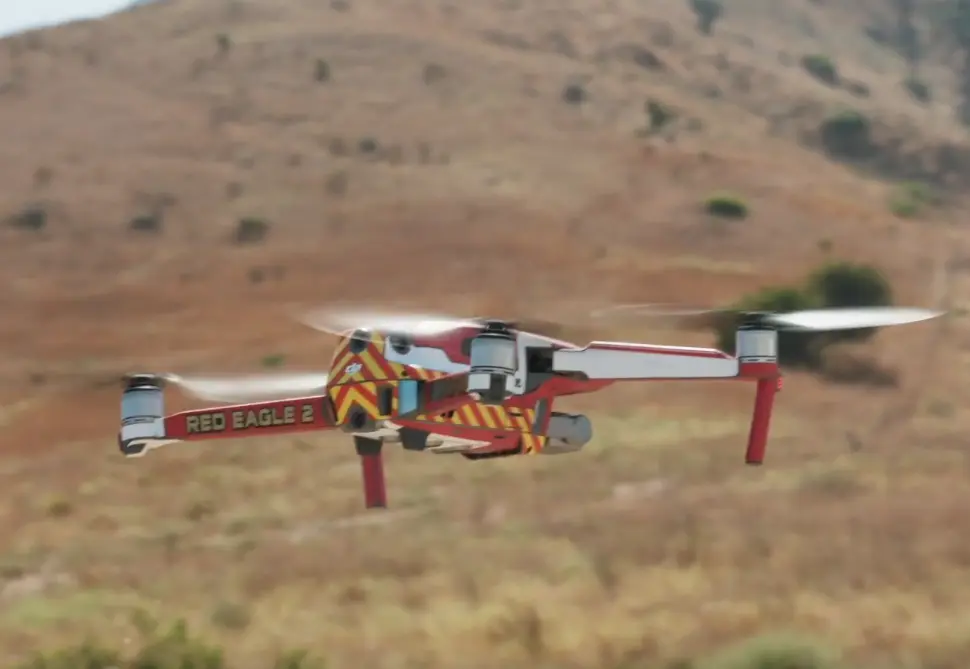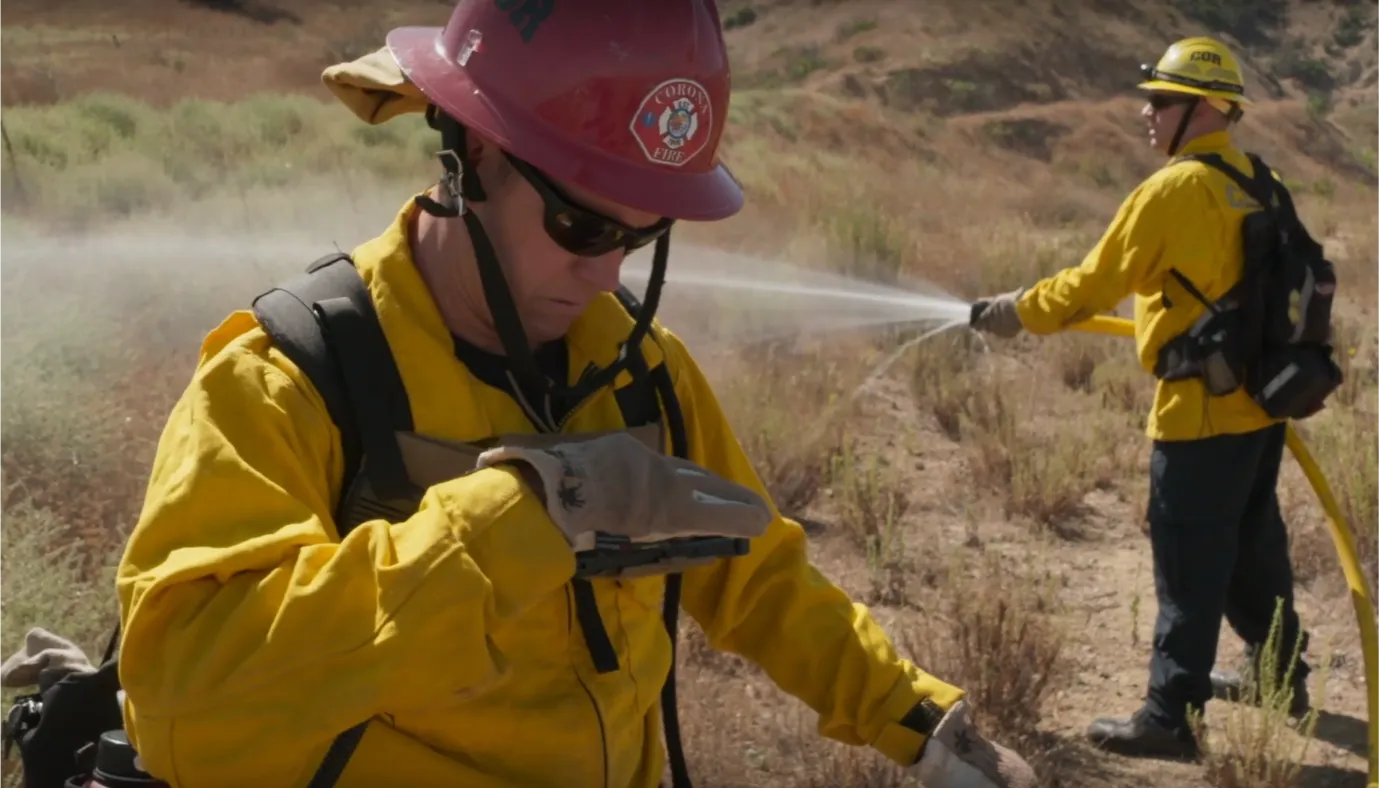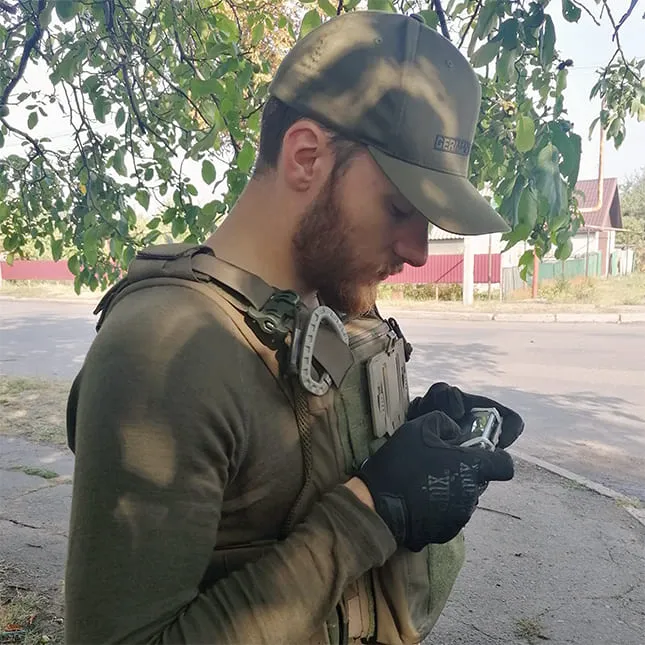In addition to the tireless efforts of firefighters, a high-tech weapon called the Android Team Awareness Kit (ATAK) is being used more and more frequently to combat wildfires. But what exactly is this system, and how can it help fight the flames?
What Is ATAK?
ATAK is software originally developed by the Air Force Research Laboratory (AFRL) that runs on Android smartphones and tablets. Initially designed for military purposes (under the name “Tactical Assault Kit”) to improve information exchange and troop coordination in combat zones, ATAK has also found its way into the civilian sector in recent years—particularly in disaster relief and rescue services. The software has proven itself during the rescue of over 2,000 people in 7 major hurricanes. We have already published a comprehensive article on ATAK, which you can find here: Introduction to the Android Team Awareness Kit
ATAK in Use During Wildfires

Using ATAK in wildfire scenarios offers numerous benefits:
- Improved Situational Awareness:
With real-time maps and communication, emergency personnel gain a better understanding of the current situation. They can track the spread of the fire, see the location of their colleagues, and exchange up-to-date information. This enables them to respond more quickly and effectively to changing conditions. - More Effective Coordination:
Communication via ATAK enables faster and more efficient coordination of emergency teams. Incident commanders can send instructions directly to firefighters on the ground, and teams can coordinate amongst themselves. This is particularly important in complex situations involving many different units. ATAK makes it possible to optimize collaboration between fire departments, police, rescue services, and other organizations. For example, firefighters can inform the police about road closures or alert paramedics to the number of injured individuals. - Faster Decision Making:
Thanks to improved information flow, incident commanders can make well-informed decisions more quickly. They have all the relevant data in real time, allowing them to deploy resources optimally. - Increased Safety:
ATAK can help improve the safety of the deployment forces by letting them locate each other and mark hazardous areas. For instance, firefighters in dangerous areas can share their positions with colleagues. - Offline Functionality:
A critical advantage of ATAK is that it can also function without cellular coverage. In wildfire areas, cellphone reception is often poor or nonexistent. ATAK allows teams to communicate (e.g., via LoRa) and use maps even in such conditions.
ATAK Plugins for Fighting Wildfires
Thanks to ATAK’s plugin architecture, the software functionality can be tailored to specific needs of wildfire response. Some particularly relevant plugins include:
- WASP (Wide Area Search Plugin):
Developed specifically for coordinating search and rescue operations. It allows responders to define search areas, track the position of search teams, and share information about found individuals. In the context of wildfire response, WASP can be used to find missing persons or coordinate resident evacuations. - UAS Tool (Unmanned Aircraft Systems Tool):
This plugin integrates drones into ATAK. Drones can be equipped with thermal imaging cameras to detect hotspots and monitor the fire’s spread. The drone images are displayed directly in ATAK, giving responders a comprehensive picture of the situation. - Hammer (Handheld Acoustic Modem for Mobile Exchanges with Radios):
Enables communication via analog radios even without cellphone reception. This is especially useful in remote areas where communication via cell networks is impossible. - Weather Plugin:
A weather plugin could display real-time data such as temperature, wind speed, and wind direction. This information is crucial for predicting the spread of the fire and positioning emergency responders accordingly. - Communications Plugin:
A communications plugin could enable ATAK to integrate with other systems, such as radios or dispatch systems.

ATAK as a Central Interface in Wildfire Response
ATAK serves as a central hub for various technologies used to fight wildfires. This demonstrates how ATAK optimizes collaboration and information exchange among different elements:
- Satellite Imagery:
Current satellite images can be imported directly into ATAK, providing emergency responders with an overview of the fire’s spread and affected areas. - Aircraft and Helicopters:
The position of helicopters and firefighting aircraft can be tracked in real time via ADS-B in ATAK, improving air support coordination. - Sensor Networks:
Sensors that measure environmental factors like temperature, humidity, and smoke can be integrated directly into ATAK. This allows for early fire detection and quick intervention. - Early Warning Systems:
By integrating early warning systems into ATAK, responders can receive timely alerts about increased wildfire risks and prepare accordingly. - Wildfire Modeling Software:
Specialized software can simulate how fires will spread, helping responders predict fire development and adapt their strategy. The resulting data can be imported directly into ATAK.
By networking these various technologies within ATAK, a comprehensive picture emerges, enabling better situational awareness and more effective coordination for the teams on the ground.
With increasing wildfire risks—90% of which are attributed to human activity—using technologies like ATAK is becoming ever more critical. By improving coordination and decision-making, responders can act faster and more effectively to minimize damage.
Firefighters’ Experience with ATAK
The Corona Fire Department in California has been successfully using ATAK for several years. Captain Andreas Johansson reports that ATAK provides invaluable advantages in terms of situational awareness, helping firefighters perform their duties more effectively, efficiently, and safely. The new mobile solution has already been used in several large-scale operations, helping responders stay in sync while reducing radio traffic.

Another example of ATAK’s successful use comes from the Overland Hand Crew in Colorado. They used ATAK to combat the Cabin Lake Fire in 2018, where the nearest cellphone tower was six miles away. By combining ATAK with the goTenna Pro X device—designed to extend radio range—they overcame communication and localization issues, thereby increasing responder safety.
The Future of ATAK
ATAK has become indispensable to U.S. agencies such as the FBI, police, rescue services, as well as disaster management and wildfire response teams. The system is continuously being developed to meet the rising demands of emergency personnel. Future improvements will include enhanced integration of Artificial Intelligence (AI), which could, for example, help more accurately predict fire spread or automatically detect hotspots in drone images. Furthermore, ATAK could be even more closely connected to external systems like weather services, sensor networks, or dispatch systems, ensuring a more comprehensive flow of information.
The development of new plugins will also play a key role in tailoring the software’s functionality to specific requirements. At the same time, user-friendliness may be improved, enabling an even more intuitive interface. Another future scenario is the use of Augmented Reality, where virtual markers in the field could help responders navigate and warn them of hazards in real time.
Conclusion
ATAK is a powerful tool that can support wildfire response in California and other regions. With real-time mapping, communication features, and plugin architecture, ATAK offers numerous benefits to emergency responders. It enables improved situational awareness, more effective coordination, and faster decision-making. The offline capability is especially valuable, allowing response efforts to continue in areas without cellphone coverage. ATAK has already proven its worth in various disaster operations and will play an even more significant role in the future of wildfire response. Continuous software development, the integration of new technologies like AI and augmented reality, and the creation of new plugins will make ATAK an indispensable tool for fighting wildfires.
Despite its advantages, it should not be forgotten that ATAK also has its limitations. Reliance on functioning hardware and software, potential security risks, and the need for training must be taken into account.
If you, too, want to benefit from ATAK and carry out your operations more efficiently, safely, and in a better-coordinated manner, TAK Hub is the ideal solution. We offer customized consulting, professional training, and the optimal technical infrastructure to unleash the full potential of this groundbreaking technology. Contact us today for a no-obligation consultation and embark on a new era of operational planning!


